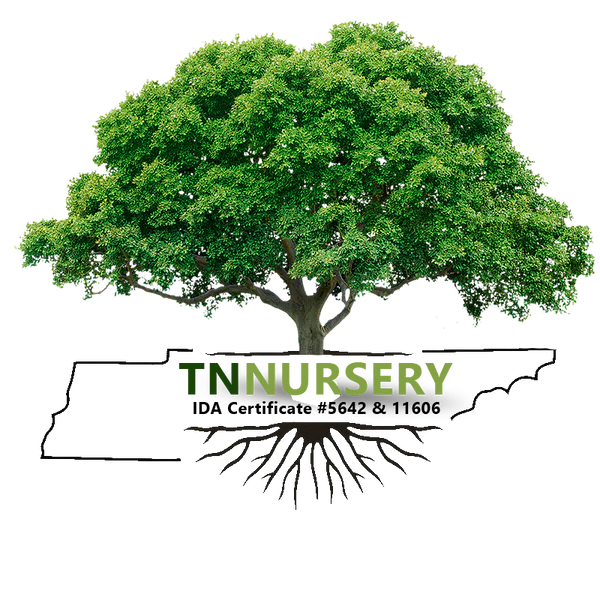Rain gardens are a way of managing storm water. The rain garden is designed to capture and filter most of the water from hard surfaces such as roofs, driveways, and sidewalks before it goes into the storm drain. Most water that enters the storm drain goes directly into creeks and lakes. Rain gardens filter the pollutants out of the water before it reaches the storm drain, keeping lakes and creeks free of many pollutants.
What Is A Rain Garden?
A rain garden is a depression or gully that collects rain from a hard surface such as a parking lot, roof, and other hard surfaces. Most rain gardens are built to accommodate a 1-inch rain.
How Does A Rain Garden Help?
Rain gardens help by slowing runoff, so more water is absorbed in the soil. They also filter the storm water before it reaches storm drains and goes into creeks and lakes. Typically, the rainwater stays in the rain garden for up to 48 hours before drying up.
In addition, rain gardens serve as habitat for butterflies, other insects, and birds. They typically contain bright, blooming plants so are pleasant to look at.
How Does A Rain Garden Work?
Rain gardens use the physical, chemical, and biological properties of soil, plants, and microbes to purify water. These are settling, chemical reactions in the soil, plant uptake, and biodegradation in the root zones of the plants.
Settling
The water slows down in a rain garden, so pollutants and sediment fall to the bottom of the rain garden. The plants also work to slow the water and trap pollutants in it such as debris, chemicals, and some microbes. For example, phosphorus causes algae blooms in rivers and lakes. Rain gardens help filter phosphorus out of the water before it reaches places where it would cause an algae bloom. Plastic bags that would cause problems for animals in a creek or lake are caught on the vegetation and can be safely disposed of.
Chemical Reactions In The Soil
Some pollutants stick to soil surfaces and are absorbed. Other pollutants evaporate while sitting in the rain garden. Both these processes lead to purer water, so pollutants don’t reach lakes and streams.
Plant Uptake
The plants in the rain garden absorb nutrients in the rainwater that would cause problems in other places. Some plants are able to uptake lots of nutrients which make them ideal for filtering water from a parking lot or street. When the plants die they release their nutrients into the rain garden. Instead of allowing this, remove dead plants promptly.
Biodegradation
Microbes in the soil break down organic and inorganic substances in the rainwater. Oil and grease are removed and broken down by microbes. Disease causing pathogens can also be removed and broken down.
Rain Garden Essentials
Rain gardens have certain features. Rain is directed into a shallow bowl-shaped area where it can sit until it is absorbed or evaporates. Native plants with deep roots are planted in the rain garden and need little watering or fertilization once established. The roots help transfer the water deep into the soil where other plants can use it. The soil in the rain garden is prepared so that water can be easily absorbed.
Rain gardens should be at least ten feet from any structure. Do not place them on or near septic systems or drain fields. Rain gardens should not be placed under the drip line of trees. Most rain gardens are placed in sunny spots, but shade rain gardens are possible. Don’t place the rain garden in areas that drain poorly. Place it up slope to catch the water before it reaches poorly drained areas. You can direct the water from your roof into the rain garden with an extension to the down spout.
Sizing Your Rain Garden
Math alert! The size of your rain garden depends on the size of the catchment area. For example, take the size of your roof. Decide how much of that square footage contributes to the water in the downspout nearest your rain garden. If you have a roof that is 1800 square feet, and a quarter of that supplies the drain spot near your rain garden, then that is 450 square feet. If any part of the driveway or other hard surface contributes to the water going into the rain garden, add that to the square footage. Divide the total number by six to get the size of the rain garden. In our example, that is 75 square feet. As a general rule, rain gardens should be twice as long as they are wide.
Installing The Rain Garden
Your rain garden should be six inches deep after it is planted and mulch is spread around the plants. You should probably dig it eight inches deep. If you have sandy soil, the addition of some compost may be all you need to add when digging your rain garden. If you have clay soil, you will have to replace the soil to a depth of two feet. The ideal replacement soil is 50-60% sand, 20-30% topsoil, and 20-30% compost. Make sure there is no clay in the topsoil.
Make a wide, flat catchment area where the water can spread out. Steep slopes erode more, so grade a gradual slope into the catchment area. Use the soil you remove to build a berm on the downslope side of the rain garden to trap the water in the rain garden catchment area.
Some Great Native Plant Choices For Rain Gardens That are Low Maintenance and Native
Choosing Plants For A Rain Garden
When picking plants for the rain garden, remember you have three zones of wetness. You want to use native plants that can tolerate drought, but also tolerate having water around the plants for up to 48 hours in the deepest part of the rain garden. In the sides and edges, use native plants that will tolerate more normal moisture. On the periphery, plant drought resistant native plants.
When designing your rain garden, pick native plants that bloom at different times, so you always have something in bloom. Mix heights, shapes, and textures to add interest even when the plants are not in bloom. At Tennessee Wholesale Nursery, we can give you some choices for plants in each wetness zone that are native to your area.
After planting your chosen plants, mulch two to three inches deep around them. Make sure no mulch actually touches the plant or it will cause rot there. You will have to water the rain garden plants until they are established and during periods of extreme drought. Otherwise, the plants should be fine with the normal rainfall they receive.
Maintaining A Rain Garden
Rain gardens need to be maintained just as any other garden does. Remove weeds as soon as they appear. Native plants have difficulty competing with weeds when small. Remove debris and silt that accumulate in the rain garden. The silt will eventually fill the rain garden in if you do not remove it periodically. If a plant is diseased or dies, remove it promptly. Keep the plants pruned properly so they do not become so big they take over. If a plant multiples prolifically, you will have to remove some of the plants to keep the rain garden functioning as designed. On the other hand, you may have to replace some plants occasionally.
Enjoy
Once established, a rain garden is a low maintenance area that can attract birds, butterflies, and other beneficial insects. Tennessee Wholesale Nursery can help with the best native plants for your region. Just give us a call at 931-692-7325 to get started.


